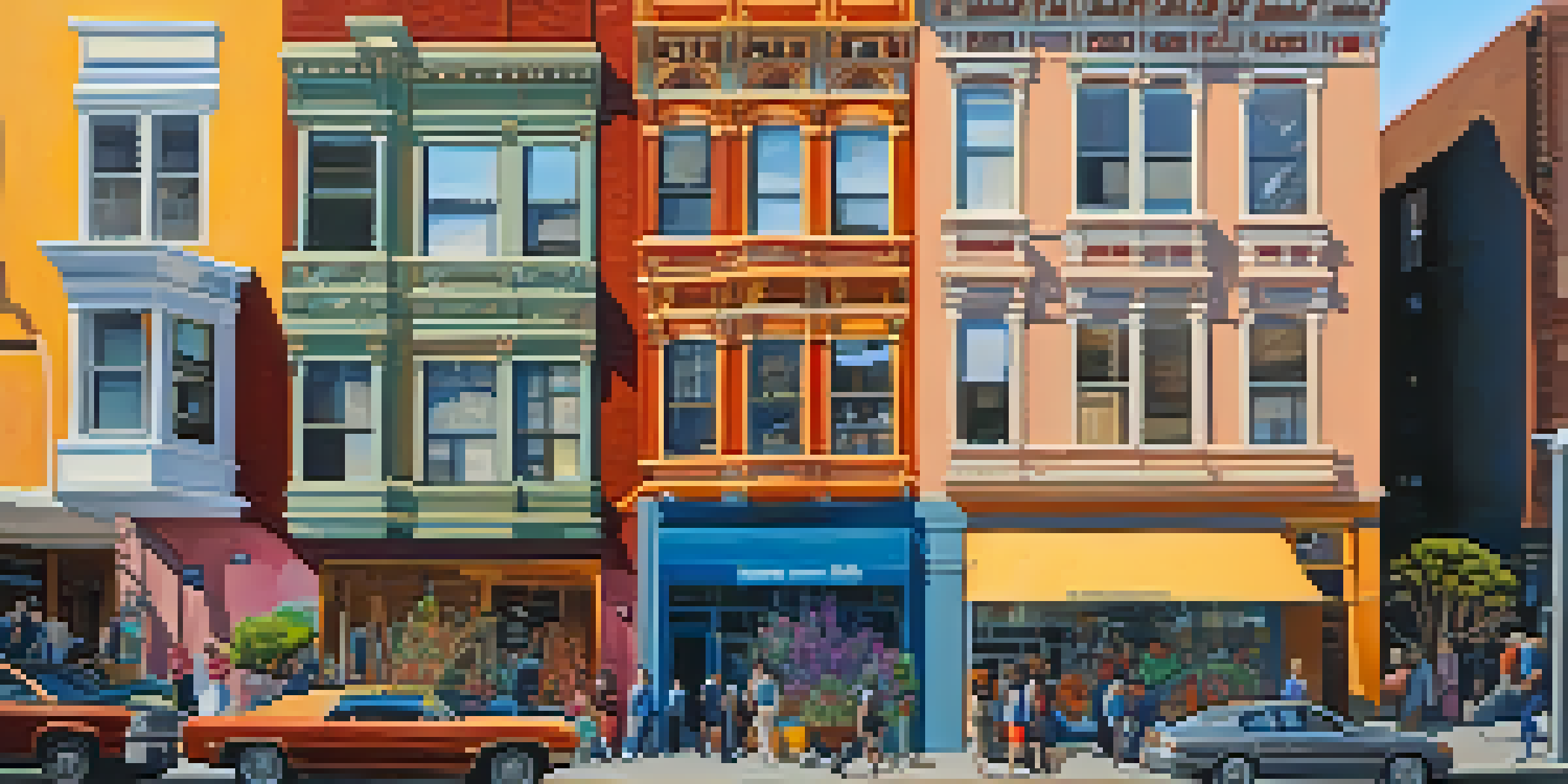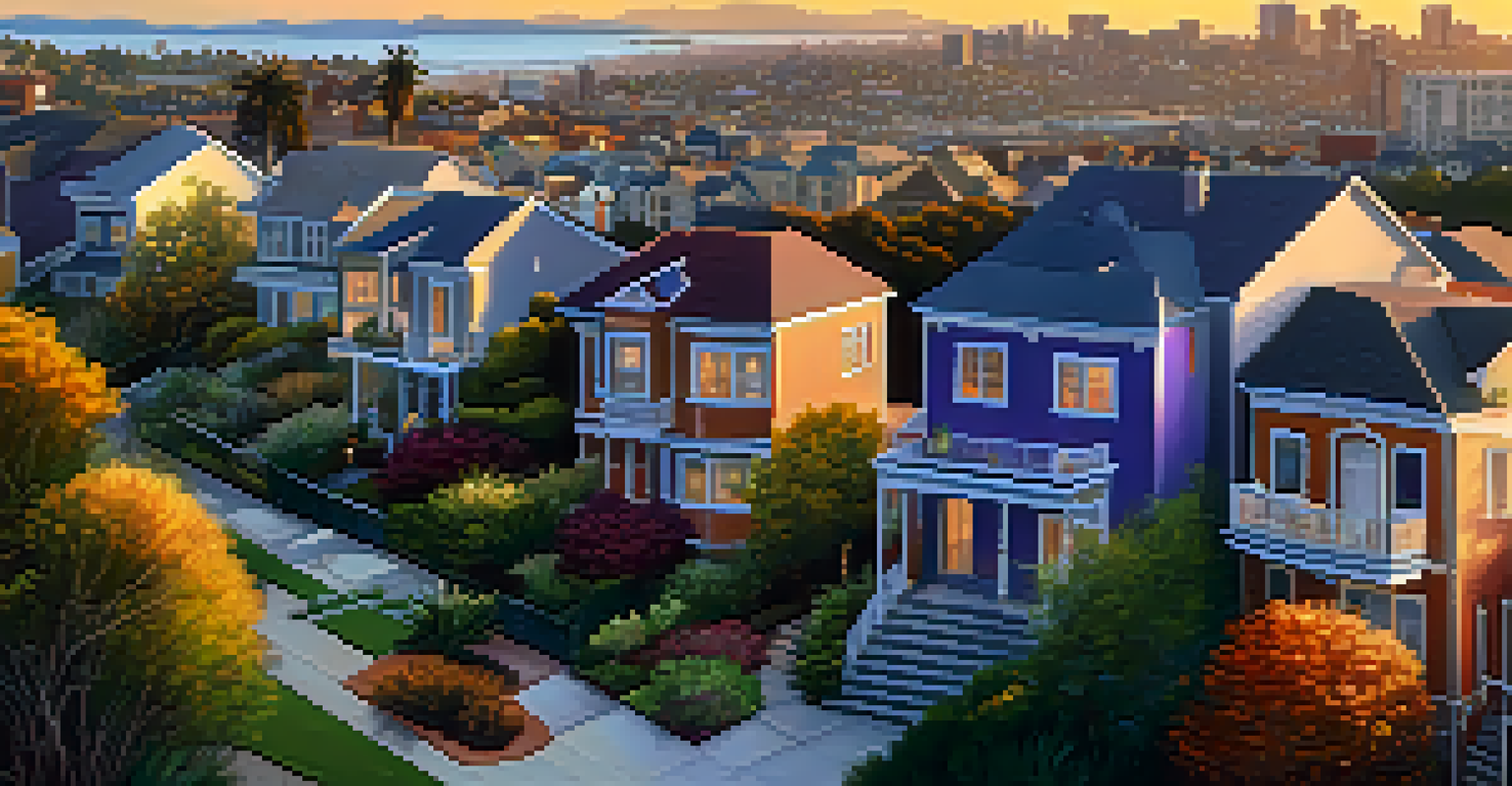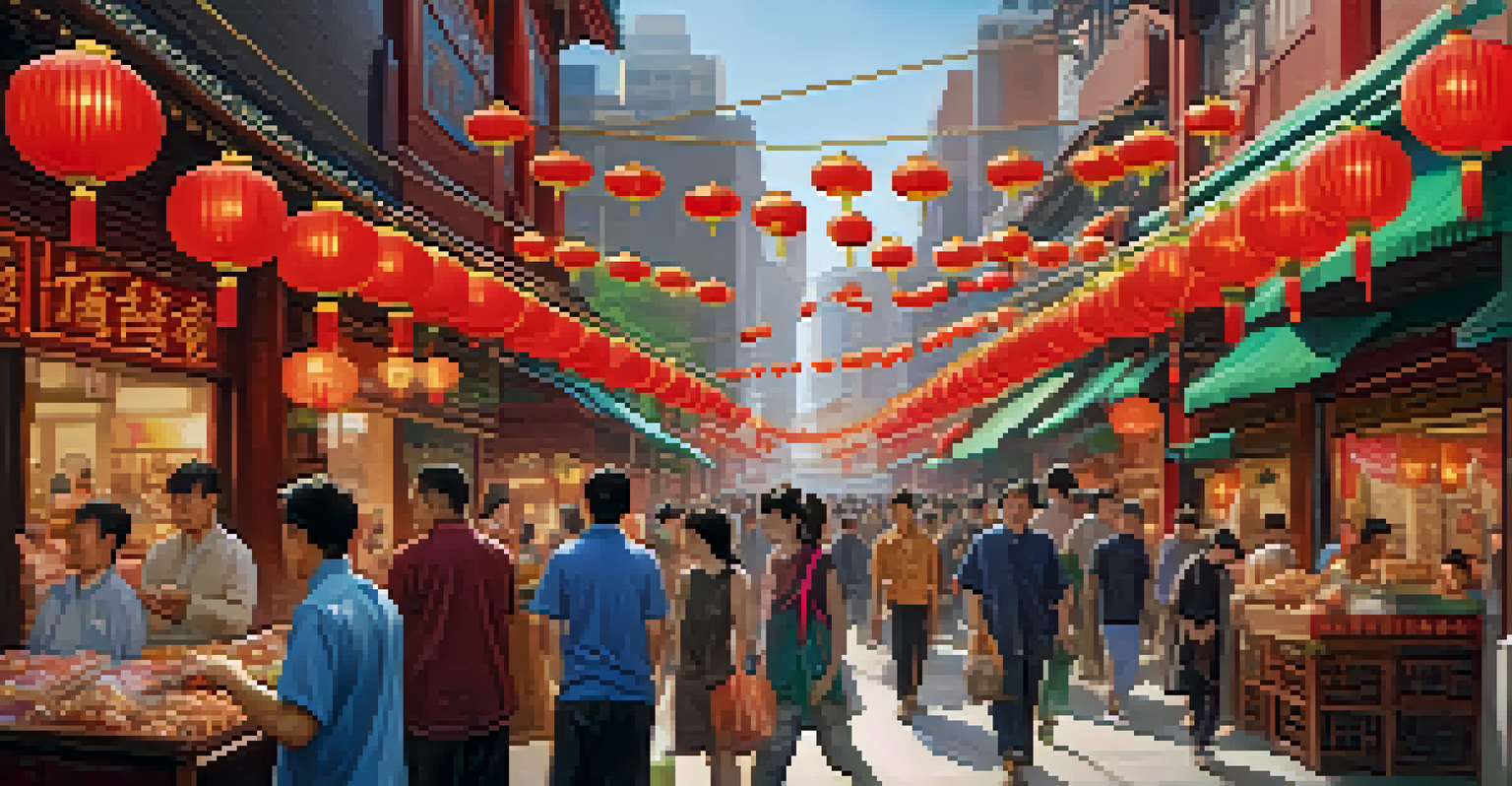Gentrification Challenges in San Francisco's Urban Landscape

Understanding Gentrification: A Double-Edged Sword
Gentrification is a term that often sparks heated debates. At its core, it refers to the process where wealthier individuals move into a neighborhood, leading to rising property values and living costs. While this can revitalize communities, it often comes at a significant cost to existing residents, who may be pushed out by increasing rents.
Gentrification is a complex issue that requires a comprehensive approach to ensure that urban renewal doesn't come at the expense of community displacement.
Consider the vibrant Mission District in San Francisco. Once known for its rich Latino heritage, the influx of tech companies and affluent newcomers has transformed it dramatically. Longtime residents find themselves struggling to maintain their homes, which is a poignant example of gentrification's impact.
This duality of gentrification—bringing in investment while displacing communities—illustrates the complexity of urban development. Understanding this landscape is crucial for anyone looking to engage with the ongoing changes in San Francisco.
Economic Disparities: The Price of Progress
As neighborhoods gentrify, economic disparities often widen. Wealthier newcomers may enjoy improved amenities, but existing residents frequently face escalating costs that outstrip their income. This can create a palpable tension between the old and the new, where the benefits of urban renewal are not shared equally.

Take a look at the Bayview-Hunters Point area. Once a vibrant community, it now faces the dual challenge of rising rents and the threat of displacement. Many residents, who have lived there for generations, struggle to keep up with the cost of living as developers eye the area for upscale housing projects.
Gentrification's Complex Impact
Gentrification revitalizes neighborhoods but often displaces long-term residents due to rising living costs.
These economic disparities highlight an essential challenge in addressing gentrification. How can cities foster growth without leaving behind the very communities that have contributed to their character?
Cultural Erosion: Losing Community Identity
One of the most poignant challenges of gentrification is cultural erosion. As new businesses open and demographics shift, the unique cultural fabric of neighborhoods can begin to fray. Longstanding traditions and local customs can become overshadowed by commercial interests, leading to a loss of identity.
The greatest challenge of our time is to keep our cities affordable, diverse, and vibrant without losing their unique character.
For instance, the changing landscape in Chinatown reflects this struggle. Once a bustling hub for Chinese immigrants, the area now sees many traditional shops being replaced by trendy cafes and boutiques. This transformation can alienate residents who feel that their cultural heritage is being erased.
Preserving cultural identity amidst these changes is a significant challenge for urban planners. Finding ways to honor and integrate the rich histories of neighborhoods into future developments is crucial.
Housing Affordability: A Growing Crisis
Housing affordability is perhaps the most pressing issue stemming from gentrification. As property values rise, many residents find themselves unable to afford their homes or even rent in their neighborhoods. This housing crisis can lead to increased homelessness and social instability.
In San Francisco, the average rent for a one-bedroom apartment has skyrocketed, pushing many working-class families to the outskirts of the city. This displacement not only disrupts lives but also alters the community landscape, as diverse voices are pushed out.
Cultural Identity at Risk
As gentrification progresses, unique cultural traditions can be overshadowed by new commercial interests, threatening community identity.
Addressing housing affordability requires innovative solutions, such as increased affordable housing development and rent control measures. These strategies can help maintain the city’s diverse population while still allowing for growth.
Community Activism: Voices Against Displacement
In response to the challenges posed by gentrification, community activism has emerged as a powerful force. Local organizations and residents are banding together to fight against displacement and advocate for their rights. These grassroots movements often play a crucial role in raising awareness and influencing policy.
For example, the San Francisco Tenants Union has been at the forefront of tenant rights advocacy, providing resources and support to those facing eviction. Their efforts serve as a reminder that collective action can lead to significant change, empowering residents to stand up for their homes.
Community activism highlights the resilience of neighborhoods facing gentrification. By coming together, residents can create a unified front to combat the pressures of urban development.
Policy Solutions: Navigating a Path Forward
Navigating the challenges of gentrification requires thoughtful policy solutions. Local governments have the power to implement measures that can mitigate the negative effects while promoting growth. This includes initiatives like affordable housing mandates and support for local businesses.
San Francisco has made strides in this area with policies aimed at preserving affordable housing and protecting renters. However, the effectiveness of these measures often hinges on public support and political will, highlighting the need for ongoing community engagement.
Need for Affordable Housing Solutions
The housing affordability crisis requires innovative policies to ensure that diverse populations can remain in their neighborhoods.
Ultimately, effective policy solutions should balance the needs of existing residents with the benefits of new investments. This delicate balancing act is essential for creating a more equitable urban environment.
The Future of San Francisco: A Balancing Act
As San Francisco continues to evolve, the future of its neighborhoods hangs in the balance. Gentrification presents both challenges and opportunities, making it essential to find a way forward that honors the city's diverse history. The decisions made today will shape the urban landscape for generations to come.
With ongoing discussions about affordable housing, community identity, and economic equity, it's clear that a collaborative approach is vital. Engaging residents in the planning process can ensure that their voices are heard and valued in the transformation of their neighborhoods.

Ultimately, the future of San Francisco will depend on its ability to adapt and innovate while preserving the unique character that has long defined it. By addressing gentrification thoughtfully, the city can work towards a more inclusive urban landscape.